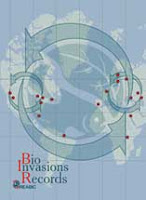Stara A, Zuskova E, Vesely L, Kouba A, Velisek J. 2021. Single and combined effects of thiacloprid concentration, exposure duration, and water temperature on marbled crayfish Procambarus virginalis. Chemosphere 273: 128463. https://doi.org/10.1016/j.chemosphere.2020.128463
Abstract
The increasing utilization of chemicals and ongoing climate change have a negative impact on aquatic ecosystems. The present study examined combined effects of water temperature, chemical concentration, and duration of exposure to the neonicotinoid thiacloprid on marbled crayfish Procambarus virginalis. Crayfish were exposed to thiacloprid at the environmental concentration of 4.50 μg L-1 and 10% 96LC50 to marbled crayfish, 64.64 μg L-1, at water temperature of 17 and 23°C for 28 days followed by a 28 day depuration period. No crayfish died during the experiment. Both thiacloprid concentrations at 23°C showed a synergistic effect with temperature on the biochemical indicators in haemolymph compared to those at 17°C. Both concentrations of thiacloprid at both temperatures were associated with significant differences from thiacloprid-free controls (P < 0.01) in haemolymph glucose, ammonia, calcium, inorganic phosphate, and lactate; haemolymph enzymes aspartate aminotransferase, alanine aminotransferase, creatine kinase, and alkaline phosphatase; antioxidant biomarkers superoxide dismutase, catalase, glutathione S-transferase, and reduced glutathione in hepatopancreas, muscle, and gill, and showed lipid peroxidation in hepatopancreas and muscle. Histological analyses revealed structural changes and damage to gill and hepatopancreas of exposed crayfish.
Keywords: neonicotinoid • insecticide • non-target organism • synergism • haemolymph • antioxidants










